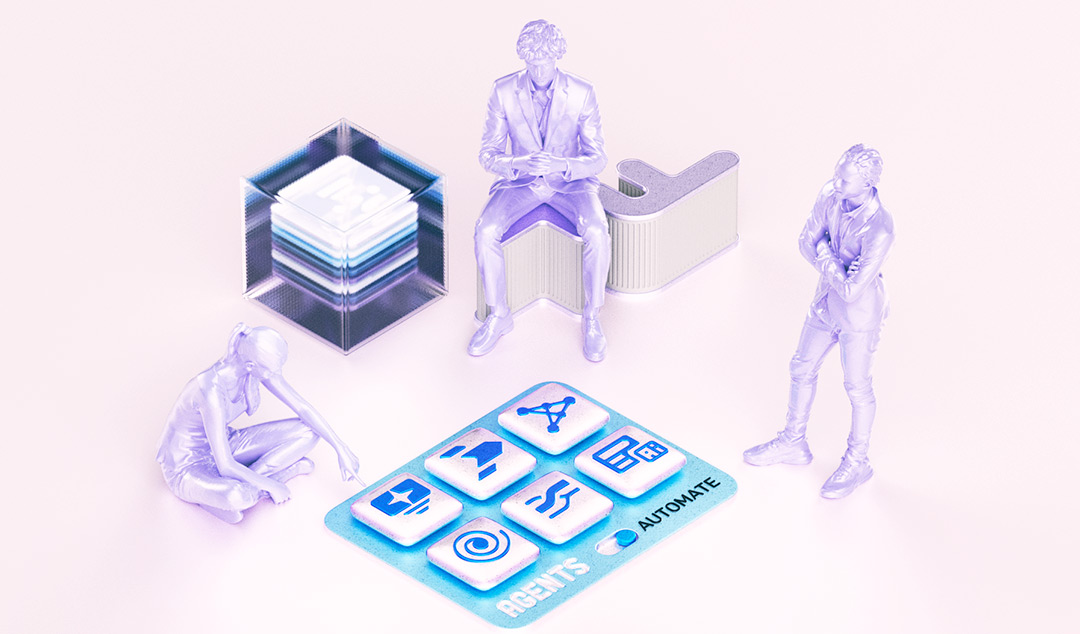AI-Autonomous Models That Are Transforming Business
Explore how autonomous AI is being used to create new models for business, that improve the performance of their companies and protect the bottom line.

As we saw in a recent blog, Artificial Intelligence (AI) is transforming our lives in ways that could only be imagined just a few years ago. Increasingly, we are now seeing major businesses deferring important business decisions to autonomous artificial intelligences. AI offers some very attractive benefits for big businesses – an AI won’t decide to move job, they work uncomplainingly 24 hours a day, 365 days of the year, and often, in their narrow area of expertise, they significantly outperform humans. In this blog, we will explore how such autonomous AI is being used to create new models for business.
Brief Overview of Autonomous AI
The Merriam-Webster dictionary defines autonomous as “existing or capable of existing independently”. One of the most exciting things about AI is the ability to create autonomous computer systems, that is, computer systems that are capable of making decisions without human intervention. We are all familiar with the idea of autonomous cars, which combine AI with multiple sensors to identify the road ahead and avoid any hazards. But Autonomous AI can now be applied to many different areas of business and life.
AI is the generic term for any computer system that is able to display human-like intelligence. One of the most important current areas of AI development is Machine Learning (or ML), where a set of data is used to train an algorithm to recognize certain patterns in a dataset. When the algorithm is presented with new data, it is then able to identify those patterns. In most cases, the model will keep trying to learn from all the new data it receives.
“Big Data” is a term that is often bandied about, usually by marketing departments who like the sound of it. But the simple fact is that data is a fundamental requirement for any AI system. As a result, one of the biggest contributors of the AI revolution has been a revolution in the collection, analysis, and retention of data.
Deep Learning is a subset of Machine Learning that uses neural networks that simulate how a human brain works and is able to exhibit traits such as short-term memory and complexity. Deep Learning can create models that can be used for things like image recognition and natural language processing.
Business Models for Using Autonomous AI
In a report from 2017, the Harvard Business Review (HBR) identified 4 models for using autonomous AI in business. These are the Autonomous Advisor, the Autonomous Outsourcer, the World-Class Autonomous Employee and the All-in Autonomy. Each of these models can be found being used somewhere in the business world.
The Autonomous Advisor replaces the role traditionally taken by management consultancies like Bain and BCG. Here, the autonomous AI is given the task of reviewing critical business data and drawing inferences from it in order to make recommendations for senior management. Just as with the use of management consultants, this model can lead to workforce malaise, as seemingly random dictats filter down through the ranks of management and are blamed on “the consultants”.
The Autonomous Outsourcer model is associated with companies like Accenture, indeed in the HBR report, they use the portmanteau “Accenturazon” (a combination of Accenture and Amazon) to sum up this model. In this model, businesses use AI services that are hosted in AWS, Azure or Google Cloud. These can provide many useful functions that are beyond the budget of a business to develop themselves. However, because the service is outsourced, it’s essential that there is proper management oversight.
The World-Class Autonomous Employee encompasses cases where AI is employed to perform a specific function better at it than any human would. Here the AI is viewed as an integral part of the team, and it is included in all management and business processes. Unsurprisingly, this model is favored by many of the tech giants like Google and Netflix.
The final model, All-in Autonomy, refers to businesses where an AI entity has complete control over some significant business function. The best example here is the algorithmic trading companies, who use AI to improve their performance, knowing AIs can make trades faster than a human ever could.
One point highlighted in the article is that companies shouldn’t mix up these models. Each model requires a different management approach and will have different impacts on the existing workforce. They also introduce the idea of the Chief AI Officer – an executive with responsibility for all AI within the business. Certainly, as AI grows in importance, businesses will have to employ more senior managers with expertise in data science.
Examples of Autonomous AI in use
Now that you know a bit about AI and the models for applying AI in business, let’s look at some examples of how these models are already being used across various industries.
Autonomous Advisor
While many companies are developing AI solutions internally, there are also many other startups who are building their market on providing AI services to other businesses. One such company is Levadata. Levadata was born out of a real business need to cut costs during the recession in the early part of this decade. Originally it was an internal project that applied AI to analyze data from suppliers and external data sources in order to strengthen the company’s negotiating position. The project was so successful that a decision was made to spin out a separate company. They now provide AI-driven procurement analysis using a classic SaaS model.
Autonomous Outsourcer
As mentioned earlier, businesses are becoming increasingly data-driven. Without sufficient data, no usable AI algorithms can be created, and they need a constant stream of data to process. However, one of the big challenges is the sheer scale of data most businesses have to manage. Data management is a multi-faceted problem. Firstly, you have to define the structure and/or metadata for your data. Secondly, you need to store it in a database, object store or bulk data store. Thirdly, you need policies for backup, management, access, etc. The typical solution is to create a Data Warehouse. But this can be prohibitively expensive or complex.
Oracle have solved this by creating the Autonomous Data Warehouse Cloud. This is designed to automatically create a distributed database for your data and provide a simple interface for storing and retrieving the data. The system can scale elastically and is self-administering. In a Forbes article, Paul Daugherty (CTO at Accenture) says “This gives database superpowers to business people that they’ve never had before”.
World-class Autonomous Employee
Some tasks are traditionally a job for experts with years of experience and knowledge. One such is patent searching. For many businesses, protecting their IPR is essential, and to do this properly, they need to understand the patent landscape. Companies like IP.com, Elementary IP, and Cipher all produce tools that use AI to improve the process of patent searching. In effect, their AI is replacing (or at least augmenting) the role of the patent searcher.
Another example was when Google announced that they had used their Deep Mind system to improve the PUE (efficiency) of their data centers by some 40% over and above what their own experts had achieved.
All-in Autonomy
As mentioned above, the classic example of the application of All-in AI Autonomy is in algorithmic trading. Here the entire process of making money by trading has been handed over AI models that dictate exactly when to buy and sell, making their decisions in mere nanoseconds. In this sort of trading, speed is everything, and many of these companies invest huge amounts in R&D to get the fastest systems possible (often specialized FPGA devices in the place of conventional CPUs). Without the AI model, there would be no company.
Conclusions
As we have seen, AI is a major part of modern business and has led to the creation of new models for running businesses. By carefully applying these models to their businesses, C-suites can improve the performance of their companies, protect the bottom line and ensure they are future-proofing themselves. Google are such strong advocates for the use of AI, they have set up the Google AI initiative to share knowledge and empower more people to understand and use AI in their businesses and lives.
Some areas of business are better suited than others to leverage AI. Within the world of software development, UI testing is one of the biggest areas that can benefit from AI. Here at Functionize, we believe that AI can solve many of the really hard problems relating to UI test automation at scale. Ever since Tamas, our CEO, first came up with the idea to use AI to improve test automation, our whole company has been focused on nothing else. Over the last 4 years, we have been constantly developing new approaches to help you. We are now able to offer several models for how to integrate AI into your testing strategy including as an autonomous expert, able to create self-healing tests or as an outsourced AI-driven testing environment using the Functionize Test Cloud.











